Wired Networking:
Networking that uses a cabling system that guides data signals along a specific path is called wired networking. In wired networking, the cable is the medium through which the information moves from one system to another. A cable can be of various metals like copper, tin, or silver. Some commonly used transmission media for wired networking include twisted pair cable, coaxial cable, ethernet cable, and optical fiber.
(1) Twisted Pair Cable- It is one of the oldest and the most common media used for data transmission. A twisted pair of wires consists of two insulated copper wires, typically about 1 mm in thickness. The wires are twisted together in a helical shape. The wires are twisted to avoid interference that results in cross-connection and data loss. These are commonly used in local telephone communication. They are relatively cheaper as compared to other guided media due to which they are also used in a network for short and medium-length connections. There are two types of twisted pair cables, Unshielded Twisted Pair (UTP) and Shielded Twisted Pair (STP). The UTP is used nowadays as modern cables for the Internet and they are lower in cost and installation and maintenance is easy compared to coaxial cables. STP is similar to UTP, but it is covered by an additional jacket to protect the wires from External interference.

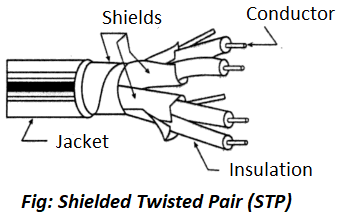
(2) Coaxial Cable- A coaxial cable, commonly known as coax, consists of a copper wire coated with plastic insulation. The insulation is wrapped in copper shielding, which makes the cable insensitive to noise. Coaxial Cable is very common, and although it is more expensive than twisted pair cable, it is considerably less expensive than fiber-optic cable. These cables are very difficult to install and maintain because they are too big to carry and replace. The coaxial cables are used in the transmission of television signals, long-distance telephone lines, closed circuit TV, etc.

(3) Optical Fibre- They are very reliable communication channels and they transmit data in digital form. They use light impulses that travel through clear flexible tubing (tiny threads of glass or plastic). It consists of a very narrow strand of glass called the core. The core is covered by a concentric layer of glass called the cladding. The outermost layer is known as the jackets or the plastic cladding and it protects against environmental dangers. The data is transmitted through an optical fiber using the optical transmission system that comprises three parts listed here-
- Transmission Medium- a thin glass fiber.
- Light Source- a light emitting diode (LEDs) or laser diode (LDs).
- Detector- a photodiode that generates electric pulses when light falls on it.
Following are the advantages of Optical Fiber-
- Immunity to electromagnetic interference and crosstalk.
- No electrical ground loop or short circuit problems.
- Small size and lightweight.
- Large bandwidth for size and weight.
- Safe in combustible areas (no arching).
- Immunity to lightning and electrical discharges.
- Longer cable runs between repeaters.
- Flexibility and high strength.
- Potential high-temperature operation.
- Secure against signal leakage and interference.
- No electrical hazard when cut or damaged.
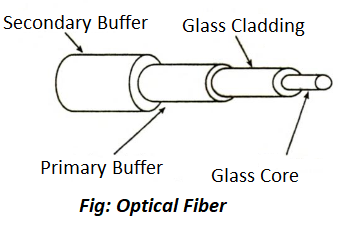
(4) Ethernet Cable- Ethernet cable is used to connect two devices in a network. It can be used to connect-
- A computer with a modem, switch, or hub.
- Two computers directly without any hub or switch.
- A hub with a switch.
- Two switches or hubs.
Each Ethernet cable has RJ-45 connectors at both ends with each connector usually having eight pins. These connectors look similar to telephone jacks which may have four or six pins. Note that the data through the Ethernet cable is transmitted using the Ethernet protocol.

(5) USB Cables- The Universal Serial Bus is used to connect the keyboard, mouse, and other peripheral devices. But there are some special network devices used to connect to the Internet through the USB called dongles. The dongle is a small peripheral device that has compatible with mobile broadband with a slim slot in it and connects the Internet and acts as a modem to the computer.
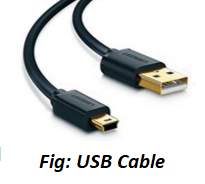
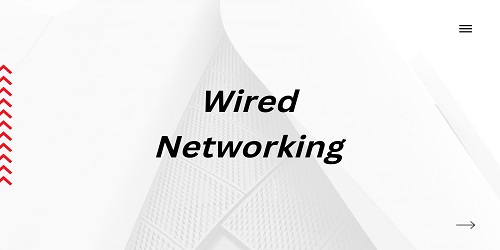




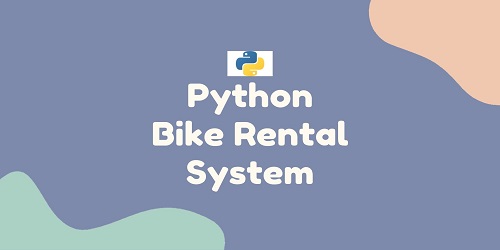



Comments (No)